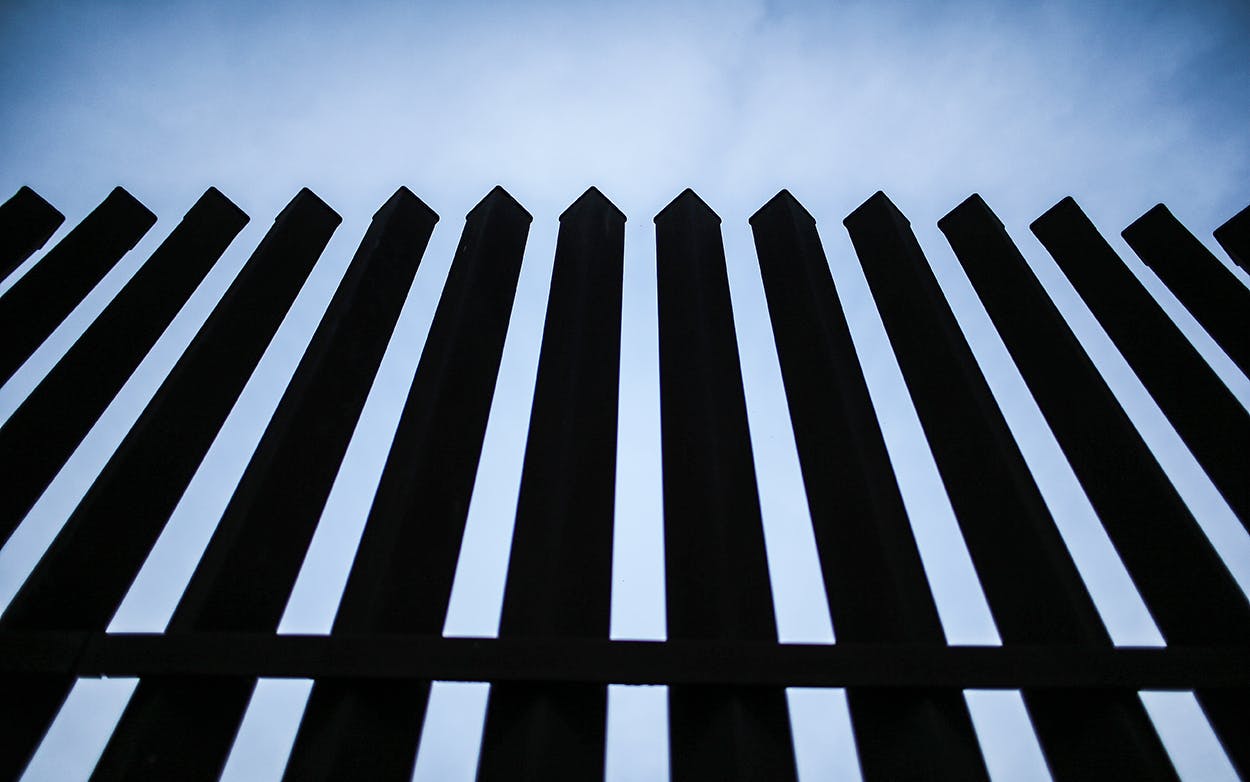As construction got underway this week on 20 miles of border barrier west of El Paso, the U.S. Border Patrol and Trump administration heralded it as a major start to the president’s long-promised wall. Critics, however, questioned the need for the $73 million project and said it’s not a wall at all, suggesting that on one of the day’s hot-button public policy debates—immigration—there’s not even agreement on the language of the debate.
“The president has started his project,” El Paso Border Patrol Sector Chief Aaron Hull said at a groundbreaking ceremony Monday in Santa Teresa, N.M. “This is the beginning, in this sector, of the president’s border wall–very much so.” Border Patrol officials announced earlier this week that Homeland Security Secretary Kirstjen Nielsen was coming to Santa Teresa on Thursday to “visit the new border wall construction efforts, receive an operational briefing on the wall’s construction and meet with local sheriffs.” The visit was later canceled without explanation. Hull used the word “wall” more than 30 times during the groundbreaking ceremony. He twice referred to the planned structure as a fence, only to quickly correct himself.
The project will put up 20 miles of closely placed steel bollards in a mostly empty desert area just west of the Texas state line. The bollard barrier can block both pedestrians and vehicles, and is replacing existing fencing designed to obstruct vehicles. Bollard barriers are used elsewhere on the border, though they generally have been referred to as fences in the past. Under the Trump administration, bollard structures are now called walls.
“The barrier in Santa Teresa is replacement of existing fencing, yet to hear members of the Trump administration and Border Patrol, this is ‘Trump’s border wall,’” said Veronica Escobar, a former El Paso County judge and the Democratic nominee for Congress in deep-blue El Paso. “Many of us here on the U.S.-Mexico border see this for what it is: a desperate attempt by the president to appease his base and dupe them into thinking he’s kept a promise — one rooted in xenophobia and willful ignorance about border communities.”
When Victor Manjarrez joined the Border Patrol in 1989, the U.S.-Mexico border was essentially barrier free. On patrol at Otay Mesa near San Diego, one of the busiest crossing points along the border, a more experienced agent drew his attention to a one-inch cable. “I remember going with a journeyman (Border Patrol agent) and he goes, ‘Hey, that’s the border, don’t go across it.’ I said, ‘Where’s the border?’ ‘That cable laying on the ground,’” said Manjarrez, who went on to be the Border Patrol sector chief in Tucson and El Paso in a 22-year career. He is now a doctoral student and associate director of the Center for Law and Human Behavior at the University of Texas at El Paso.
The first major barrier along the U.S.-Mexico border was built near San Diego during the Clinton administration. The Secure Fence Act, signed by President George W. Bush in 2006, provided for about 700 miles of barriers along the 2,000-mile southern border. Most of the barriers are in California, Arizona and New Mexico. The vast majority of the 1,200-mile border in Texas still lacks physical barriers.
Manjarrez was in charge of barrier construction for the Border Patrol when it began in 2006. He remembers having to provide regular construction updates to Bush senior advisor Karl Rove. He also got a lesson in the politics of border terminology. “And it was funny because we were calling it a wall and we were told, ‘It’s not a wall. It’s a barrier,” Manjarrez said, adding that officials were sensitive to how the construction was viewed by residents on both sides of the border. Manjarrez supports the Trump administration’s efforts to upgrade the barriers west of Santa Teresa. He said barrier construction and doubling the size of the Border Patrol are key reasons that illegal crossings have dropped dramatically in the last decade. That decline also is cited by Trump’s critics, who say his request for billions in additional border security spending is wasteful.
In the Border Patrol’s El Paso sector, which includes El Paso County and all of New Mexico, apprehensions of undocumented immigrants declined by 79 percent between fiscal years 2006 and 2017, the third-largest drop among the nine Southwest border sectors. In the most recent fiscal year, the 2,182 El Paso sector agents averaged less than one apprehension of an undocumented immigrant per month.
Drug seizures by agents in the El Paso sector also are down dramatically. “Not only do many border communities like Santa Teresa, El Paso and others already have barriers, fencing and walls, but the El Paso region became one of the safest communities in the country long before the wall here was built,” Escobar said. “The unfortunate byproduct of this kind of pandering is that it feeds misinformation, which then fuels costly and unnecessary expenditures—like troops and new walls at the border—funded, of course, by the American taxpayer (and not Mexico).”
- More About:
- Border Wall
- Donald Trump
- El Paso






